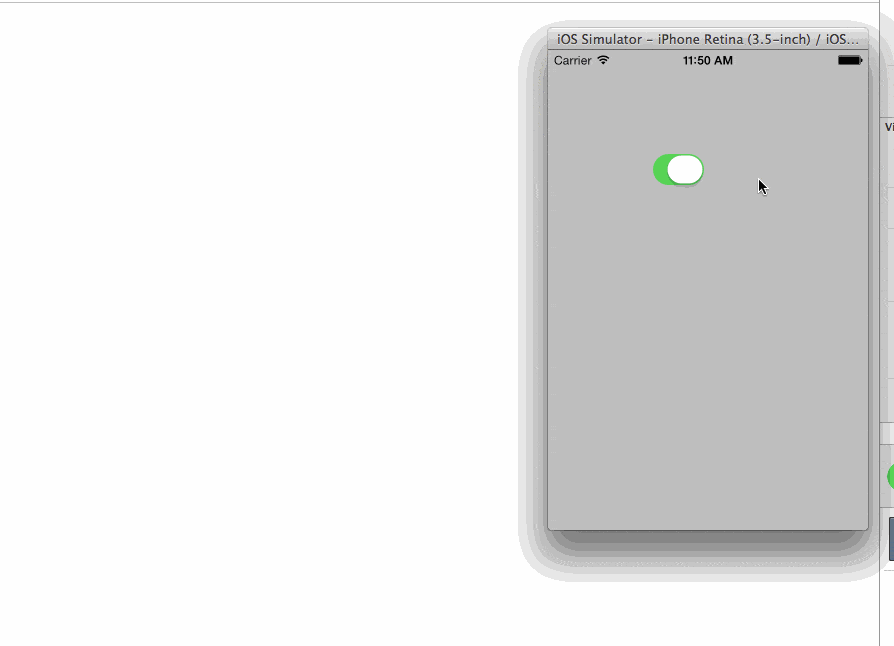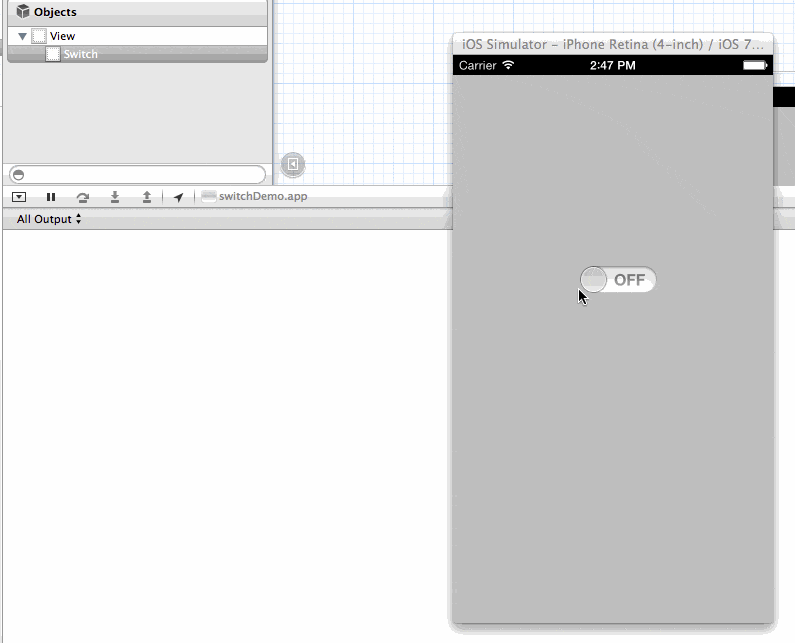编辑
现在已经在ios7.1上修复了
不要进行任何调整来修复它。
编辑2
显然,同样的问题在iOS 8.0和8.1中再次发生。
编辑3
现在已经在ios9.2上修复了
不要进行任何调整来修复它。
今天我在UISwitch的事件ValueChanged:中看到,当我从On切换到Off或者从Off切换到On并且我的手指仍停留在右侧或左侧时,它会连续调用。 我附上了GIF图像以更清楚地显示NSLog。

我的Value Changed方法是:
- (IBAction)changeSwitch:(id)sender{
if([sender isOn]){
NSLog(@"Switch is ON");
} else{
NSLog(@"Switch is OFF");
}
}
iOS6的开关代码与我们的期望相同:

那么有人能建议我如何只调用一次其状态为打开或关闭,或者这是一个错误还是什么……?
更新
这是我的演示: